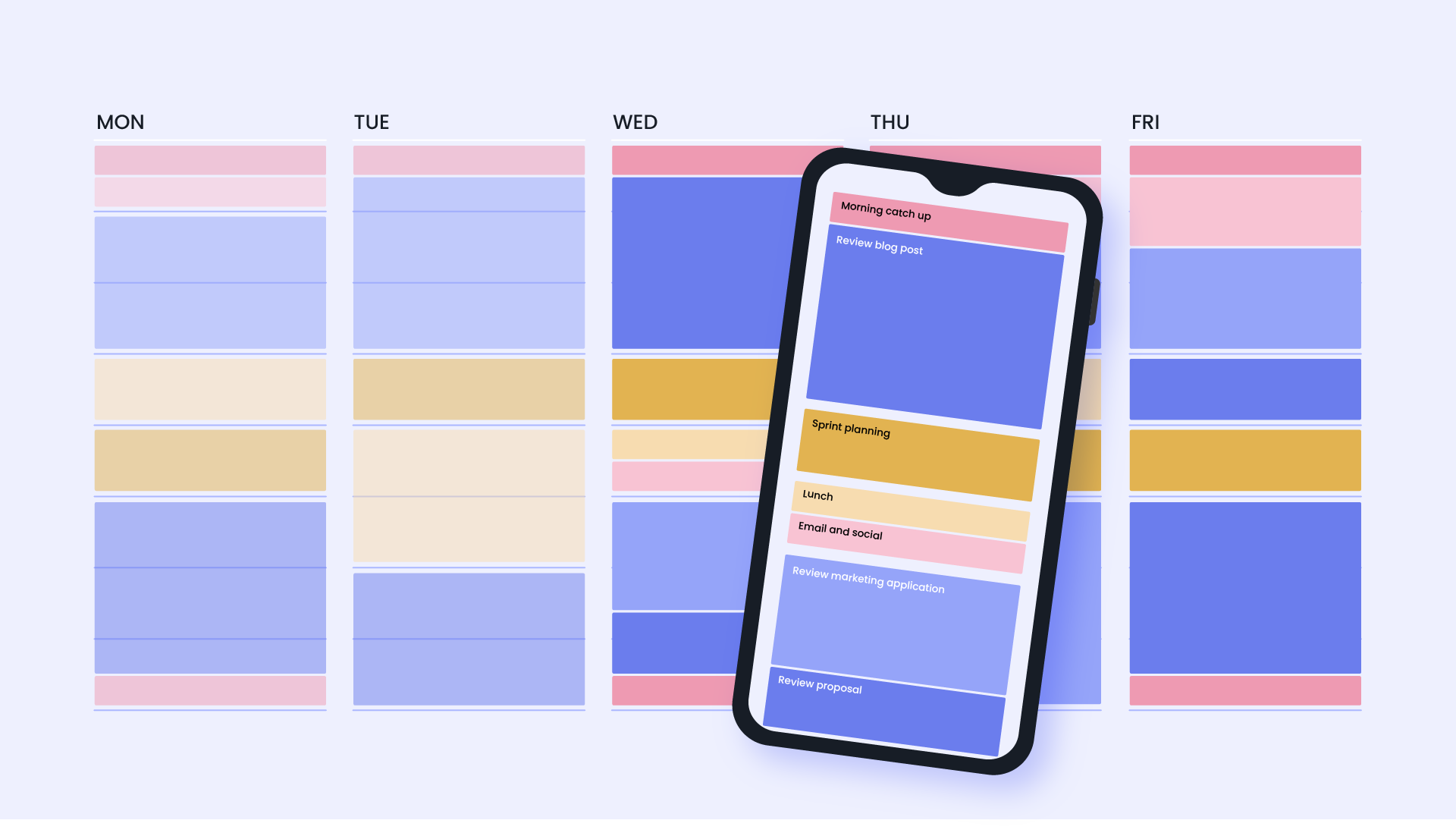What’s the difference between a full-time employee and part-time employee? As the name suggests, it’s about the number of hours of worked per week. But there are other important distinctions between part-time and full-time employees, especially for labor laws, benefits, and more.
In 2023, only 16.8% of the entire US workforce is working part-time – a 16.4% decline since 2010 where over one fifth of employees were in part-time roles. And since the average employee works 45.8 hours/week, you’ll want to make sure you’re classifying your employees correctly to benefit both you – and your workforce.
In this article, learn everything you need to know about full-time vs. part-time employment – what it is, why it's essential, and what to keep in mind while classifying your employees.
What's the difference between full-time and part-time?
So how many hours is part-time, and what does that mean for my employees? Let’s walk through the primary differentiators between full-time and part-time employees:
Full-time employee considerations
1. Full-time hours
As the name suggests, full-time employees typically work full-time hours (the entire 40-hour workweek.) Although, this can vary from company to company and industry to industry. For example, some companies have implemented a 4-day workweek. Other full-time professions, however, often work upwards of 60+ hours a week.
The Fair Labor Standards Act (FLSA) does not define full-time or part-time employment, but the Bureau of Labor Statistics (BLS) considers those working 35 hours or more per week to be full-time workers. However, the Affordable Care Act (ACA) considers those that work at least 30 hours per week for more than 120 days to be full-time.
2. Full-time benefits
Full-time workers often enjoy a more comprehensive benefits package, including health insurance, retirement plans, paid time off, and various other perks. If a company employs more than 50 full-time employees, they are required to offer health insurance under the ACA. Of course, companies do not need to classify their employees as full-time to give them benefits. It's just that they are almost always full-time employees if benefits are being received.
3. Job stability
A full-time job typically provides better job security and stability, as they often are positioned as long-term roles with permanent responsibilities, and offer more career advancement within the organization. Many companies want (and need) full-time employees for consistent worker scheduling, reliable continuity of business operations, and more straightforward labor management.
4. Income & taxes
Full-time employees generally receive a fixed salary, which provides a predictable and consistent income. But whether an employee receives a salary or an hourly wage doesn't necessarily define their employment classification (part-timers can still receive salaries, for instance, and full-timers could still be getting an hourly wage). In most cases though, full-time employees would be "salary-exempt" (meaning they are not eligible for overtime pay) where part-time employees are not (more on that later).
Part-time employee considerations
1. Part-time hours
Part-time employees typically work fewer hours than their full-time counterparts, often classified at less than 35 hours per week. The specific number of hours may vary from employer to employer and may differ from week to week.
2. Part-time benefits
Traditionally, part-time workers would receive limited or no benefits, such as access to health insurance, retirement plans, or paid leave. Part-time employees were often compensated with their wages alone. However, as the job market has become more competitive in the past few years, more employers are offering benefits to part-time employees to attract and retain talent, and improve the public image of their company.
3. Flexibility
While full-time jobs may offer more stability and security, part-time jobs, given their less demanding time schedules, provide more flexibility. These positions can be ideal for those who need to balance work with other commitments, such as education, caregiving, or pursuing additional part-time employment.
4. Income
Finally, most part-time employees are typically compensated through an hourly wage for the amount of hours they work, resulting in a more variable income.This also makes part-time workers often eligible for overtime, per labor laws. Unless they are “salaried-exempt,” employees that work 40 in a workweek must receive overtime pay at a rate 1.5X (or more) their regular rates of pay. Though some part-time workers operating under a more structured schedule may be offered a fixed salary.
Pros & cons of full-time workers
Full-time employment is the traditional standard, and it comes with its own advantages and disadvantages for both employees and employers.
Pros & cons of part-time workers
Part-time employment also offers its own set of pros and cons for both employees and employers.
Employment laws for full-time & part-time workers
Whether your organization consists of full-time or part-time employees, you'll need to comply with the complex web of labor laws and regulations that apply to them. Failing to adhere to these laws can lead to legal disputes, financial penalties, and damage to a company's reputation.
Here are some of the essential laws and regulations that employers must consider:
1. Fair Labor Standards Act (FLSA)
The FLSA sets the federal minimum wage, overtime pay, recordkeeping, and child labor standards affecting full-time and part-time workers in the private sector and in Federal, State, and local governments.
For non-exempt employees earning an hourly wage (a category that includes many part-time workers), the FLSA mandates overtime pay at a rate of 1.5 times their regular hourly rate for any hours worked over 40 in a workweek.
The FLSA places strict restrictions on the employment of minors, including the number of hours they can work and the types of tasks they can perform.
2. Affordable Care Act (ACA)
Large employers with over 50 full-time workers (or full-time equivalent) are obligated to offer affordable health insurance coverage to full-time employees under the ACA. Accurately determining full-time status for ACA compliance necessitates meticulous tracking of employee hours and compliance with reporting requirements.
3. Employee classification
Employers must accurately classify workers as either employees or independent contractors. Misclassifying employees as independent contractors can result in legal and financial penalties, as well as obligations such as providing benefits and complying with tax withholding requirements.
4. Anti-discrimination laws
The Civil Rights Act of 1964 and other anti-discrimination laws prohibit employers from discriminating against employees based on characteristics such as race, color, religion, sex, national origin, age, or disability. These laws apply universally, regardless of an employee's full-time or part-time status.
5. Family and Medical Leave Act (FMLA)
The FMLA mandates that eligible employees, including certain part-time workers, receive unpaid, job-protected leave for up to 12 weeks for specific family or medical reasons. Employees are eligible for FMLA leave if they’ve worked for an employer for at least 12 months, have worked at least 1,250 hours over the past 12 months, and their company has at least 5- employees within 75 miles of their work location. Employers must comply with notice and recordkeeping requirements.
6. State & local laws
Employers must be vigilant regarding state and local labor laws, which can differ significantly from one another. These laws might impose supplementary obligations, such as paid sick leave, minimum wage rates, employee scheduling, and non-discrimination protections.
7. Occupational Safety and Health Administration (OSHA)
Employers must observe OSHA regulations to provide a safe and healthy workplace for all employees, irrespective of their full-time or part-time status. This includes maintaining working conditions that do not pose a risk of serious harm, training employees about chemical and other potential hazards, supplying personal protective equipment at no cost, and potential inspections to ensure all OSHA regulations are met.
8. Employee benefits
Employers offering benefits such as retirement plans, health insurance, or paid time off must be cognizant of federal and state laws governing these benefits, including rules concerning eligibility, vesting, and reporting.
What about overtime & overtime exemptions?
Overtime exemption can significantly impact the classification of workers as either exempt or non-exempt from pay requirements under labor laws like the Fair Labor Standards Act (FLSA). In addition to benefits, compensation, and working hours, whether or not an employee is considered full-time or part-time can also be based on their ability to collect overtime.
1. Exempt vs. non-exempt employees
Under the FLSA, workers are typically categorized as either exempt or non-exempt based on criteria such as job duties, salary, and supervisory roles.
Exempt employees are, unsurprisingly, exempt from overtime pay requirements. They are often considered full-time employees due to their consistent work schedules and salaried status.
Non-exempt employees, on the other hand, are entitled to overtime pay for hours worked beyond the standard 40-hour workweek. Non-exempt status is common among part-time workers, especially those who work variable hours.
2. Overtime pay requirements
Non-exempt employees, whether full-time or part-time, are entitled to receive overtime for any hours worked beyond 40 hours in a workweek. This overtime rate is typically 1.5 times their regular hourly rate.
Exempt employees, by definition, are exempt from overtime requirements. They receive a fixed salary regardless of the number of hours worked, and this distinction often contributes to their classification as full-time employees.
3. Impact on benefits & compensation
Full-time exempt employees, due to their exemption from overtime pay, may receive a fixed salary and a comprehensive benefits package, including health insurance, retirement plans, and paid time off.
Part-time non-exempt employees, who are eligible for overtime, may receive an hourly wage, limited benefits, and variable working hours that align with their non-exempt status.
Are contractors considered full-time or part-time?
Contractors, also known as freelancers, represent a distinct category of workers that differs from traditional full-time or part-time employees.
Contractors are not technically classified as full-time or part-time employees because they function as independent entities rather than direct employees of an organization. Instead of being subject to traditional employment laws and regulations, contractors typically operate under different legal frameworks.
Key characteristics of contractors
- Independence: Contractors are technically self-employed and operate independently. Therefore, they control their work, including how and when they perform their tasks, whereas full-time or part-time workers may not.
- Flexible arrangements: Contractors have the freedom to choose their clients, projects, and work hours. This flexibility is one of the defining features of contract work.
- Payment structure: Instead of receiving a regular salary or hourly wage, contractors are compensated based on agreed-upon terms, which may involve a fixed fee, project-based payment, or hourly rate, requiring contractor software to provide estimates, invoices, and payments.
- Taxation: From the employer's perspective, the biggest difference between employees and contractors has to do with taxes. Contractors are responsible for handling their own taxes, including self-employment taxes. As such, employers do not withhold taxes or provide benefits to contractors.
- Lack of employment benefits: Contractors do not typically receive employee benefits such as health insurance, retirement plans, or paid time off from the companies or clients they work for.
A final note on full-time vs. part-time employees 💼
The distinctions between full-time, part-time, contractors, and exempt or non-exempt workers are pivotal in shaping the modern workplace. Understanding these classifications reveals the diverse needs of today's employees, from the stability and benefits enjoyed by full-timers to the flexibility and work-life balance cherished by part-timers. Employers must navigate these differences to ensure legal compliance and ethical employment practices, while job seekers should be aware of these distinctions to make informed career choices.





































